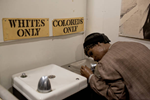 The category of “white people” is a relatively recent invention, born from the era of colonization and slavery, and designed to consolidate power. By blending various European identities into one group, colonial elites created a label that served to legitimize their dominance over Africans and Indigenous peoples. Both Black and white communities live with the legacies of this invention. If the constructed nature of “white people” were fully understood, it would transform how both groups see themselves, each other, and the society they inhabit.
The category of “white people” is a relatively recent invention, born from the era of colonization and slavery, and designed to consolidate power. By blending various European identities into one group, colonial elites created a label that served to legitimize their dominance over Africans and Indigenous peoples. Both Black and white communities live with the legacies of this invention. If the constructed nature of “white people” were fully understood, it would transform how both groups see themselves, each other, and the society they inhabit.
For those identified as white, recognizing the constructed nature of whiteness demands a new understanding of privilege. Whiteness often presents itself as neutral or the default, but seeing it as a historical invention reveals how contingent and vulnerable it truly is. Many Europeans became “white” not as a personal choice, but as the result of a bargain, accepting privilege in exchange for their place in a racial hierarchy. This realization reframes privilege not as a personal achievement, but as an outcome of a system built to exclude others. White as well as Black scholars engaged in “whiteness studies” have contributed to understanding this phenomenon.
Despite growing awareness, this reckoning is fraught with resistance. Recent calls for “white cohesion” and open appeals to white supremacy are attempts to reinforce the myths that gave rise to whiteness. These efforts threaten to reverse social progress and revive a period when white dominance went largely uncontested. The persistence of such movements highlights the effort required to maintain whiteness as a natural and permanent state. Because it is a fragile social invention, whiteness must be constantly defended, which explains the resistance to movements supporting diversity and multiculturalism. Similarly, the project of historical revisionism, undertaken by the Trump administration, in order to cast whiteness not as an oppressive construct, but as natural, innocent or even benevolent, is to secure its legitimacy in the present and future.
Ultimately, acknowledging that “white people” are an invention makes space for imagining a future in which race no longer defines social standing. However, this possibility remains uncertain as long as voices supporting white supremacy seek to restore old hierarchies. By recognizing that racial categories are human-made, both Black and white communities can begin to reimagine what it means to coexist. In this process, a more just and expansive freedom—rooted not in dominance, but in shared humanity—becomes possible.
Related: The invention of whiteness: the long history of a dangerous idea. By Robert P. Baird / The Guardian